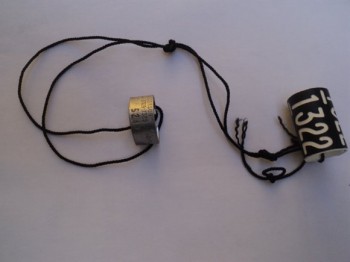This following account by Elizabeth Campbell of Pro Delphinus, Peru comes from BirdLife International’s Albatross Task Force blog (click here).
The ACAP-listed Waved Albatross Phoebastria irrorata is an Ecuadorian breeding endemic and is considered to be Critically Endangered.

A Waved Albatross. Photograph by Barry Baker
“We were approached early one morning by a fisherman in Mancora. He was just back from a fishing trip targeting yellow fin tuna and hammerhead sharks. We started chatting about our work and he mentioned how he had seen albatrosses at sea while he was fishing with nets off the port of Mancora in northern Peru.
After a couple hours chatting the fisherman was comfortable enough to share with us that he had once had a waved albatross entangled in his gillnet. He and his crew were able to release the bird from the net and then noticed the metal and plastic identification rings it had on its legs. Unfortunately, besides writing down the 4 digit ID codes from each band they also removed them from the bird. As the bird appeared uninjured they released it and it flew off.
We immediately submitted this information to colleagues at the Charles Darwin Research Station in the Galapagos Islands and Colorado State University - we were eager to find out more about this lucky albatross. We were excited to see our email inbox the very next day. Our colleagues had the details of this bird’s journeys.
This waved albatross was tagged as an adult, and was possibly male. It was first captured and banded on Española Island in the Galapagos. It was subsequently recaptured in 2010, 2011 and 2012. The good news is that even though its identification bands were removed, this individual also carried another tag so its identification by biologists in the Galapagos is still possible.
Fishermen sometimes see seabirds with ID bands but few know their function or importance. We hope that our efforts when talking to fishermen about these bands helps increase their appreciation for these fascinating animals, and that slowly fishermen in Peru will better understand the value of releasing animals alive … and with their bands still intact.”

The colour and metal bands removed from the gill-netted Waved Albatross
Click here to read of a global review of gills nets and seabirds.
With thanks to Oli Yates.
Selected Reference:
Žydelis R., Small, C. & French, G. 2013. The incidental catch of seabirds in gillnet fisheries: A global review. Biological Conservation 162: 76-88.
John Cooper, ACAP Information officer, 4 June 2013

 English
English  Français
Français  Español
Español